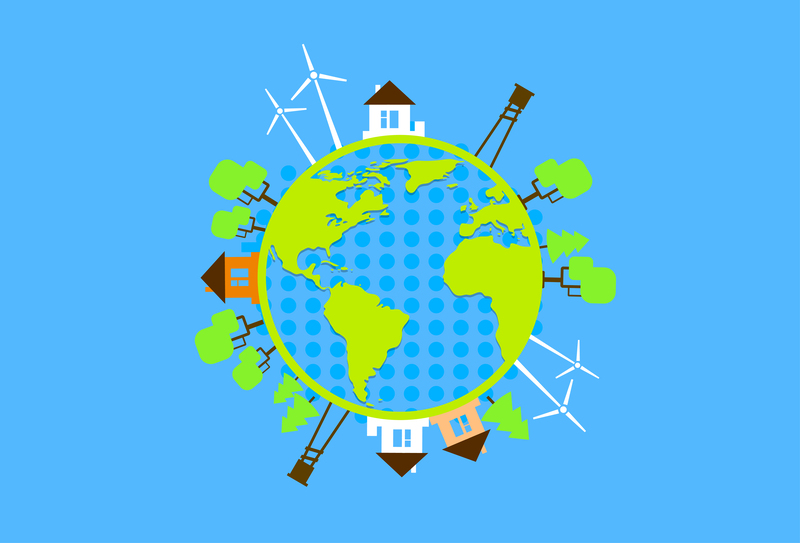Unlock the Potential of Discarded Items with Imaginative Upcycling Techniques
Are you looking to add creativity and sustainability to your lifestyle? Imaginative upcycling techniques offer an inspiring way to breathe new life into discarded items, turning them into valuable treasures. In a world where waste is a growing concern, learning how to creatively upcycle unwanted materials can have a significant positive impact on the environment, your wallet, and your artistic soul. Let's dive into the world of creative reuse and discover how you can unleash the hidden potential of objects that would otherwise end up in landfills.
What is Upcycling and Why Does it Matter?
Upcycling is far more than just a buzzword; it's a sustainable practice with the power to revolutionize our approach to waste. Unlike traditional recycling, which breaks down materials to create new ones, upcycling involves transforming discarded items into products of higher quality or value. This often requires a dash of imagination, a sprinkle of DIY skills, and a willingness to see "trash" in a whole new light.
- Reduces landfill waste: By upcycling, we divert materials from overflowing landfills.
- Conserves resources: Upcycling uses less energy compared to recycling or manufacturing new products.
- Inspires creativity: The process encourages us to look at items around us through the lens of possibility.
- Supports sustainable living: Upcycling is an essential principle of eco-friendly lifestyles and circular economies.
- Saves money: With a bit of imagination, you can create functional and beautiful objects without spending much.
The Difference Between Upcycling and Recycling
Recycling usually involves breaking down used materials such as plastic, paper, or glass and remanufacturing them into new products. This process, while valuable, typically consumes energy and sometimes degrades the quality of the material. Upcycling, on the other hand, elevates discarded objects or materials directly, often making them more aesthetically pleasing or functional than before--without extensive industrial processing.

Imaginative Upcycling Techniques to Revamp Discarded Items
Ready to get creative? The possibilities for imaginative upcycling are truly endless. Whether you're an experienced DIY enthusiast or a beginner in eco-crafting, you can start transforming your "junk" into works of art, practical home decor, or even unique gifts. Here's a guide to some tried-and-tested methods.
1. Furniture Flipping
One of the most popular forms of upcycling is furniture transformation. Instead of tossing out old tables, dressers, or chairs, consider revamping them with a coat of paint, new hardware, or creative decoupage.
- Pallets to Coffee Tables: Sand down old shipping pallets, add caster wheels and a glass top for a rustic yet modern coffee table.
- Ladder to Bookshelf: An unused wooden ladder can become a chic bookshelf or plant display when painted and mounted on a wall.
- Suitcase Side Table: Vintage suitcases stacked together can serve as eye-catching side tables with secret storage compartments.
2. Textile Transformations
Discarded clothing or textile scraps have immense upcycling potential. With basic sewing skills, you can create functional and fashionable items:
- T-shirt Tote bags: Turn old t-shirts into reusable grocery bags--no sewing required for many designs!
- Jeans into Aprons: Worn denim jeans can become durable kitchen or gardener's aprons.
- Patchwork Quilts: Combine colorful fabric scraps for unique, sentimental quilts that tell a story.
3. Artistic Assemblages
Mix and match odds and ends to craft stunning artwork or conversation-starting decor. Let your imagination run wild!
- Found Object Sculptures: Use metal parts, old tools, and broken electronics for striking modern art pieces.
- Frame Collages: Arrange discarded picture frames into a decorative wall collage.
- Bottle Cap Mosaics: Collect colorful bottle caps to create vibrant mosaic designs for tables or garden stepping stones.
4. Upcycled Planters and Garden Decor
Gardening fans can get creative repurposing household waste into eye-catching planters or outdoor ornaments.
- Tin Can Planters: Paint or decorate empty cans for a quirky windowsill garden.
- Teacup Herb Gardens: Unmatched teacups become adorable single-plant pots for kitchen herbs.
- Shoe Organizers for Vertical Gardens: Old fabric shoe organizers are perfect for creating a small-space vertical garden on a fence or wall.
5. Repurposed Lighting Fixtures
Set the mood and light up your home using upcycled materials:
- Wine Bottle Pendant Lamps: Cut the bottoms off empty wine bottles and fit them with lighting kits for eclectic kitchen or bar lighting.
- Colander Chandeliers: Spray-painted colanders make playful and functional dining room pendants.
- Mason Jar Lanterns: Turn mason jars into charming candle holders or fairy light lanterns.
Tips for Successful Imaginative Upcycling
To truly unlock the creative value of discarded items, keep these guidelines in mind:
- Think outside the box: Ask yourself: "What else could this become?" The more open you are to new possibilities, the more rewarding and unexpected your results will be.
- Combine materials: Mixing different discarded items or materials can yield surprisingly cohesive and attractive new objects.
- Plan ahead: Some projects require time and preparation. Sketch your ideas and gather all necessary supplies before starting.
- Prioritize safety: When handling tools or working with glass, metal, or electronics, follow safety precautions and wear appropriate protective gear.
- Seek inspiration: Browse online platforms (Pinterest, Instagram, YouTube), visit community workshops, or join upcycling groups for a steady flow of fresh ideas.
- Add personal touches: Imaginative upcycling is your opportunity to express personality and style--embellish projects with paint, patterns, or meaningful details.
Upcycling for Sustainable Living and Environmental Impact
The environmental advantages of embracing imaginative upcycling techniques cannot be overstated. By re-imagining the value of everyday waste, we reduce our ecological footprint and help foster a culture of conscious consumption. Here's how your efforts contribute to a greener planet:
- Minimizing Resource Extraction: Upcycling extends the lifespan of existing materials, curbing the demand for new resources.
- Energy Conservation: Reusing objects consumes far less energy than manufacturing products from scratch or processing recyclables.
- Waste Diversion: By keeping materials in use, upcyclers prevent unnecessary addition to landfills and incinerators.
- Raising Awareness: Upcycled creations often become conversation starters, inspiring friends and family to rethink their own relationship with waste.
Educational and Community Benefits of Creative Upcycling
Imaginative upcycling techniques aren't just good for the environment--they also foster education, community engagement, and skill-building.
Skill Development and Lifelong Learning
Whether you're learning woodworking, sewing, painting, or electronics repair, upcycling is an excellent way to boost your practical and problem-solving abilities. Many schools, libraries, and makerspaces offer workshops and resources to support creative reuse and DIY upcycling.
Social Impact and Community Building
Community upcycling initiatives--such as clothing swaps, repair cafes, and zero-waste crafting workshops--strengthen connections between people who care about sustainability. These programs:
- Foster collaboration and teamwork.
- Provide access to tools and expertise.
- Promote inclusivity by making eco-friendly living accessible to all.

Getting Started: How to Begin Your Imaginative Upcycling Journey
Ready to unlock the hidden potential of discarded items? Follow these steps to ignite your upcycling adventure:
- Take Inventory: Scan your home, garage, or shed for items you no longer need--think furniture, glassware, clothes, or electronics.
- Research Ideas: Use search engines, DIY websites, and social media to find upcycling tutorials and project inspiration.
- Start Small: Begin with manageable projects such as turning jars into containers or making wall art from fabric scraps.
- Experiment with Techniques: Try painting, decoupage, sewing, gluing, or assembling. There's no right or wrong way as long as you have fun and stay safe.
- Share Your Work: Post your finished creations online, gift them to friends, or sell them at craft fairs and markets to inspire others.
Conclusion: Embrace the Art of Imaginative Upcycling
As you can see, imaginative upcycling techniques offer endless opportunities to transform discarded items into valuable, meaningful, and beautiful objects. Not only does upcycling contribute to environmental sustainability, but it also cultivates creativity and connects us with community and culture.
So next time you consider throwing something away, pause for a moment. Could it become your next masterpiece, a practical home accessory, or a one-of-a-kind gift? With a little vision and experimentation, you can unlock the potential of discarded items--helping to build a more sustainable and imaginative world, one upcycled treasure at a time.
Now is the perfect moment to explore the world of creative upcycling. Gather those "unwanted" items, apply your imagination, and discover just how rewarding (and fun!) it can be to give waste new purpose.
- Revamp your living space with upcycled furniture and DIY projects.
- Express your artistry through eco-friendly crafts.
- Promote sustainability in your community and beyond.
Take the plunge, experiment with imaginative upcycling techniques, and watch as even the most ordinary discarded item finds new life and meaning through your hands!
